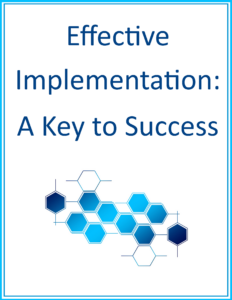 The effective implementation of a material is as critical to student success as the material’s alignment to standards. Learning List’s editorial reviews empower districts with information they need to not only to select materials but also to implement materials more effectively. They provide a qualitative analysis of each material’s instructional content and design. They point out the critical components of the product and the value each provides in the instructional process. They highlight the supports available for teachers and point out deficits in the material’s offerings.
The effective implementation of a material is as critical to student success as the material’s alignment to standards. Learning List’s editorial reviews empower districts with information they need to not only to select materials but also to implement materials more effectively. They provide a qualitative analysis of each material’s instructional content and design. They point out the critical components of the product and the value each provides in the instructional process. They highlight the supports available for teachers and point out deficits in the material’s offerings.
For example, the editorial reviews explain whether teacher resources include background in content and pedagogy, provide pacing information and/or lesson plans, and offer guidance in differentiating instruction. They explain the professional development opportunities in the material and note when a product contains additional supports for novice teachers, such as comprehensive discussions of the required content knowledge and pedagogy, and detailed lesson plans to support instruction.
Learning List’s alignment reports guide educators in their selection and use of standards-aligned materials. Our editorial reviews help educators understand the intended use and instructional components of each product so they can implement the product effectively. Together, these reviews empower educators to choose and use materials to fuel their students’ success.
A recent example of implementation gone wrong … and how reading our reviews could have lead to success!
An assistant superintendent of a subscribing district called to let us know that her high school math teachers believed that our reviews of a particular material were too generous to a publisher by failing to mention the material’s lack of rigor. They felt the material did not provide practice exercises necessary to allow students to develop mathematical proficiency.
Rigor is an attribute we review materials for both in our alignment methodology and in the editorial review. So, after the call, we reviewed our alignment reports and editorial reports for each applicable grade level.
Our alignment reports revealed the following information about the material:
- The material was aligned to a high percentage of the relevant state standards, meaning that we found at least one aligned citation for the majority of standards in each grade level. [Read more…]
- However, for several standards in each grade level, not all of the citations we reviewed were aligned, primarily because, as the Reviewer’s Comments pointed out, the citations did not address the cognitive demand of the standard.
- Furthermore, other standards were found to be aligned only if several partially aligned citations are “bundled” (i.e., used together), as stated in the Reviewer’s Comment.
Since our alignment reports revealed that some, but not all, of the citations listed in the publisher’s correlation were sufficiently rigorous to meet the cognitive demand of the standards, teachers would need to be circumspect about selecting citations to use in their lessons. Our alignment reports point out the aligned citations that teachers can use to teach each standard.
In addition to the information contained in the Alignment Report, our editorial reviews point out that while core instruction was provided in the online student edition online, “practice” was addressed in consumable student workbooks which contain hands-on activities, and practice, application and challenge problems. Our reviewers found the practice opportunities in the workbooks sufficiently rigorous to build conceptual understanding and procedural fluency.
In a follow up conversation with the assistent superintendent about the information available in our reviews, we learned that the while teachers had reviewed the online student edition, they had not reviewed the accompanying workbooks. We conjectured that perhaps her teachers concluded that the material was not sufficiently rigorous because they had not accessed the workbooks.
In order for students to get the most benefit from any instructional material, all available resources must be used as intended for instruction. Learning List’s three professional reviews of each material assist educators in both selecting and implementing materials effectively.